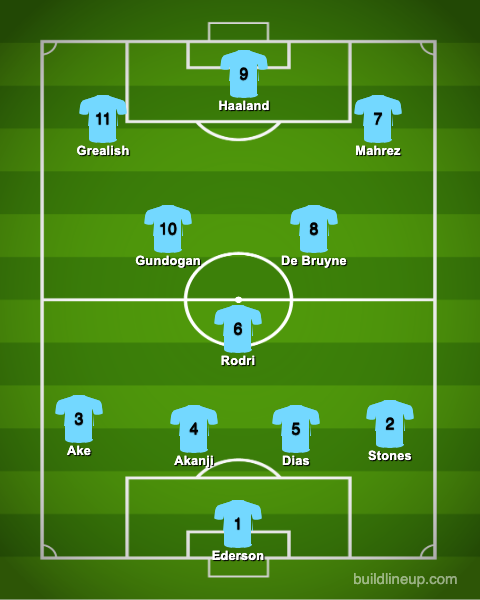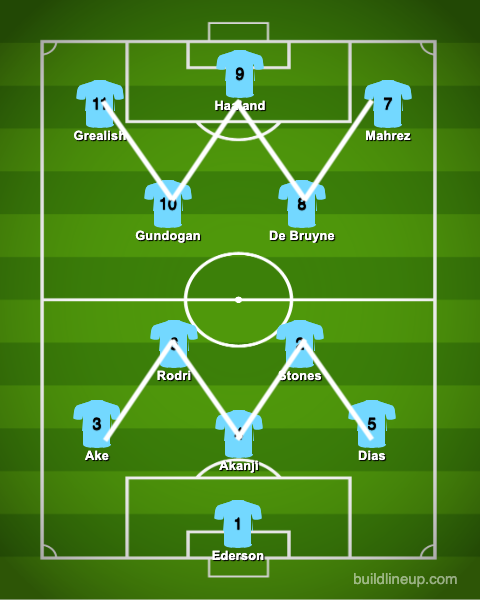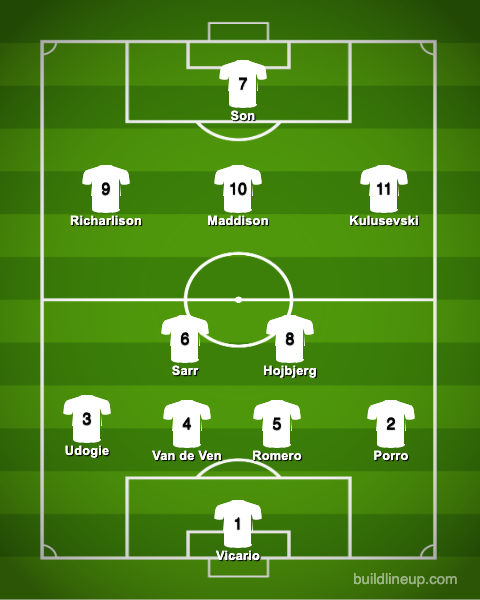Hey there new subscribers! Thanks for the positive response to last week’s article, it’s great to have you here. We’re back on the football again, but don’t run away non-football fans - there’s plenty to enjoy for all commitment levels.
Here’s to learning more about new sports. *cheers emoji* And I hope the semi-clickbait title about Beyoncé hasn’t scared you off either.
Welcome to Andrew’s Weekly Football Bulletin #8.
Game of the Weekend 🙌
Chelsea vs Arsenal
Where to start? Chelsea have struggled to hit their stride this season despite a glut of signings, and prior to this game languished in mid table. Arsenal, narrow runners-up in last year’s championship, cemented their status as serious title contenders with a late win over Manchester City last match.
Was this then a fairytale underdog story? Well, no - the world record £1 billion spent since new Chelsea owner (and generally irritating bloke) Todd Boehly took charge makes romanticising any Blues’ success challenging.
That being said, Chelsea have markedly improved under Argentine manager Mauricio Pochettino. Opting to go without a recognised striker, West London’s finest were the better team for most of this game.
Raheem Sterling has carried some of his early season form against the weaker teams onto the big stage. Despite only being 28, Chelsea’s youthful team makes Sterling one of the most experienced members of the dressing room, and has unexpectedly had to step up as a role model for his peers. He’s shown a quiet determination to get back to his best form (you may remember how clinical he was for England at the Euros in 2020), and by doing so he’s taken heaps of weight off teammates.
Mykhailo Mudryk, the nearly £100m Ukrainian winger, and Cole Palmer, have played with more freedom, benefitting from less media and fan scrutiny as analysis moves elsewhere. I don’t think it’s a surprise that they then both scored in this game, and think Sterling has played his part in facilitating that.
The question mark, of course, will be how serious are Chelsea’s intentions if they cannot hold onto what appeared a comfortable two-goal lead at home.
I don’t agree that it constitutes ‘bottling’ - Arsenal, and manager Mikel Arteta, deserve plaudits here. It should be expected that the richer, higher achieving teams are able to influence the game via their substitutes. But the performance of these individuals is never guaranteed, so credit must be given to those Arsenal players that came on and turned the tide. Leandro Trossard, in particular, is a wonderful influence, and it was his determination to get onto the cross for Arsenal’s second goal that somehow turned a dead rubber into a thrilling final 10 minutes.
The only thing this game lacked was out-of-form and out-of-favour Arsenal midfielder Kai Havertz to net a winner against his former club. But no – I guess even in sport some ideas are just too ridiculous.
Did both Manchester United and Chelsea win this week? 🏆
🥳 NO 🥳
Chelsea’s performance brings us nicely onto our favourite recurring section. While United struggled past Sheffield, but it was Arsenal’s comeback that let us down this time.
Season tally: Yes 2 - 7 No.
Tactical Trends 📊
This week, I want to explore something central to analysis of football that I think is frequently overlooked and oversimplified – formations.
I’ve always found it intriguing that while teamsheets are publicly released in list format, they’re relayed to most by a visual graphic online or on TV.
This of course makes sense. From a team’s perspective, why would you want to give away your tactics to the opposition an hour before the game has even started? And from a broadcaster’s perspective, putting these names into a diagram is more viewer friendly.
But it does often means most viewers miss the whole story. Single teams can be arranged in multiple configurations in the same 90 minute game, for loads of reasons – whether they have the ball, whether they’re winning or losing, or even which side of the pitch they’re on.
The result is often that formation representations are, basically, wrong. There’s no better example to show this than Spurs’ game against Fulham on Monday, but first, a quick crash course in formations.
4-4-2
A 4-4-2 formation (four defenders, four midfielders and two strikers for new fans) offers control and solidity. It was the formation most managers in the early/mid 2000s opted for, when I first was starting to watch football. It’s also a useful yardstick, because for the most part, graphical representations of this formation are accurate.
Imagine you’re full back Gary Neville. You play on the right of defence for England and Manchester United. Because of the 4-4-2 formation your manager has chosen, in attack you tactically work in a sort of pair with David Beckham, the right midfielder for both sides.
Conventionally, if joining an attack, Mr. Neville overlaps his run outside Beckham, wider on the pitch. The thought being this either draws a defender away from Beckham, giving him more room to cross into the box, or it frees up space for you to deliver from a new crossing position, unmarked.
Either Neville or Beckham sticks it on Van Nistelrooy’s noggin, and voilà! Goal time, job done.
The problem with 4-4-2 (and its successor in football culture, the 4-3-3) was that it was predictable. An opponent could make very informed guesses about who would be where on the pitch, making it much easier to organise against. A slight oversimplification, but you get the idea.
W-M
So, who’s gonna shake things up? Most recently, it was Pep Guardiola. Instead of instructing full backs to overlap his wingers, he asked his full back to save energy, drop into midfield, and create more passing options. John Stones was the man for the task, singled out for his excellent ball control and passing.


On a formation graphic, Stones would be in same spot as Gary Neville, which defensively was often true. Yet, when his team was in possession, Stones would advance alongside Rodri in central midfield. The idea was to overload the midfield, offer more passing options to a teammate without having to resort to playing the ball backwards and therefore giving your team an attacking advantage. This created a W-M formation, or 3-2-2-3 if you want to use traditional notation.
You can see how the fundamental fabric of the team is different, and as you might expect, it caused headaches for opposition trying to figure out how to cope with this new pressure. No surprise then that others started copying Pep’s innovation – Arsenal’s Oleksandr Zinchenko and Liverpool’s Trent Alexander-Arnold started appearing in similar positions.
Full back = striker?
Monday was the latest full back evolution. Spurs started with what would be labelled a 4-2-3-1 formation. But, in game, this looked completely wrong. Ange Postecoglou’s full backs yesterday came and took up positions directly alongside the striker – to great effect I might add.


Early in the game, Pedro Porro and Destiny Udogie both had golden scoring opportunities, because they found themselves in effectively unchartered territory. They weren’t overlapping, like Gary Neville, they weren’t coming into midfield, like John Stones. They were running, almost crazily, directly at the goal, without any defensive pressure on them. Fulham’s defence did not know how to cope, and understandably so – a likely plan to man-mark all Spurs’ star forwards left wide open space for two capable players to wreak havoc.
Full backs have attacked before, yes, but I’ve not seen them take up these positions. While this tactic is unlikely to work against stronger and more disciplined defences, I’m intrigued to see who will be looking to copy this strategy in the coming weeks.
Next time, then, you see a formation, have a think about whether it matches up with what you’re seeing on the pitch. If you do that, you’re already being more analytical than 95% of football fans, and you’re definitely learning something.
Player of the Week 🎖
Guglielmo Vicario
It’s already a theme this season that defining goalkeeper signings aren’t working out.
Andre Onana, signed for his heightened passing prowess over predecessor David De Gea, has been underwhelming at best for Manchester United. David Raya, who we’ve previously spoken about for his different profile to former Arsenal shoe-in Aaron Ramsdale, was not just out of position for Mudryk’s goal on Saturday, but also squandered possession in his own box with near disastrous consequences. And then there’s Robert Sanchez, whose weak clearance to Declan Rice gave the Gunners an unexpected lifeline.
So, Vicario’s imperious shot-stopping performance for Spurs against Fulham comparatively is even more impressive. Their number 1 is no small reason why Tottenham sit pretty and unbeaten at the top of the table.
It’s almost a return to ‘classic’ goalkeeping by the Italian – nothing too fancy, just keep the ball out the net. When Portuguese giant Joao Palhinha spanked a header goalward in the first half, Vicario unbelievably clawed the ball away from his left to keep the contest at 0-0. Then after the break, a quick Fulham surge would’ve been finished emphatically by Raul Jimenez, had Vicario not Italian stood firm and cleared the strike away from danger.
This isn’t to say Vicario cannot confidently do the ‘modern goalkeeper stuff’ either. He’s been cool under the opposition press so far, and from what I’ve seen has a similar range of passing to pick out teammates up field.
Great work from Vicario, great work.
That’s all for this week – let me know if you’ve enjoyed this week’s newsletter by leaving a comment, or sharing with other football fans. I’ll be back next week after the Manchester derby, god help United.
Cheers, Happy Halloween and look after yourself xx
Keep reading with a 7-day free trial
Subscribe to Andrew's Weekly Sports Bulletin to keep reading this post and get 7 days of free access to the full post archives.











